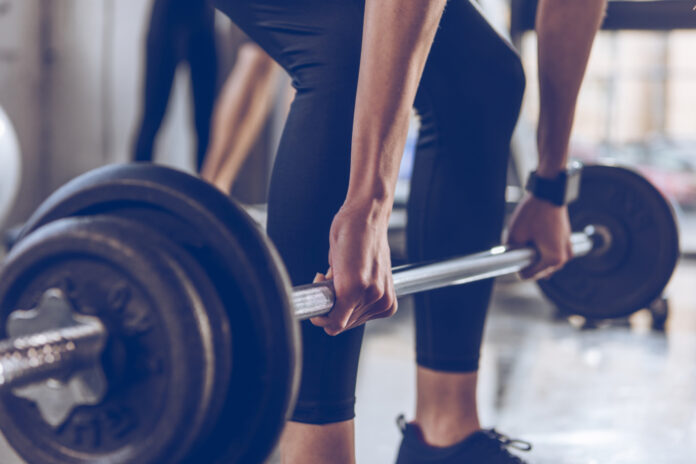Strength training, often referred to as resistance training, involves exercises designed to improve muscular fitness by exercising a muscle or a muscle group against external resistance. This form of physical activity includes a variety of techniques and equipment, targeting different parts of the body to enhance strength, endurance, and size of skeletal muscles. At its core, strength training for beginners focuses on foundational movements that engage multiple muscle groups, promoting overall physical fitness and well-being. Unlike cardio exercises that improve heart health, strength training is primarily about building muscle strength and endurance. It’s an essential component of a balanced fitness regimen, offering benefits such as improved metabolism, better joint health, and increased bone density.
The Fundamentals of Strength Training for Beginners
Basic Strength Training Concepts
At its simplest, basic strength training involves working against resistance to strengthen and build your muscles. The resistance can come from your body weight, free weights like dumbbells and barbells, resistance bands, or gym machines. Each type of resistance offers unique benefits and challenges, making it important to include a variety in your routine. Understanding these basics helps in crafting a workout that can grow with you, ensuring continued progress and minimizing the risk of plateauing.
Proper Form and Technique
The cornerstone of effective strength training is mastering proper form and technique. This not only maximizes the efficiency of your workouts but also drastically reduces the risk of injuries. For beginners, it’s advisable to start with lighter weights or even just body weight to focus on mastering the movement patterns. Engaging a qualified trainer, even for a few sessions, can provide invaluable feedback and guidance. Videos and tutorials can also be helpful, but real-time feedback is unmatched in ensuring you’re performing lifting techniques correctly.
Strength Exercises for Beginners
For those new to strength training, selecting the right training exercises for beginners is key to building a solid foundation. Begin with exercises that target major muscle groups, such as squats, deadlifts, push-ups, and rows. These movements engage multiple muscles simultaneously, offering more bang for your buck in terms of time and effort. Starting with compound exercises helps in improving overall strength and stability, which is crucial for progressing to more complex movements. Aim for two to three sets of 8 to 12 repetitions for each exercise, ensuring you can perform each rep with good form before adding weight.
Essential Equipment for Strength Training
Weights
The most common types include dumbbells, barbells, kettlebells, and weight plates. Dumbbells are versatile and perfect for a wide range of exercises, making them ideal for beginners. Barbells allow you to lift heavier weights and are excellent for compound movements like squats and deadlifts. Kettlebells can be used for dynamic exercises that improve strength and balance.
Resistance Bands
They come in various sizes and resistance levels, accommodating beginners and advanced athletes alike. Resistance bands are particularly useful for performing pull exercises, assisting with stretches, and targeting smaller muscle groups that are difficult to engage with free weights. They’re also portable, making them a great option for maintaining your workout routine while traveling.
Navigating Gym Machines
Machines are designed to target specific muscle groups and offer controlled movement, reducing the risk of injury. For beginners, those like Smith machines can be an excellent way to familiarize yourself with strength training movements in a safer environment. Start with machines that offer guided motions, such as the leg press, chest press, and lat pulldown. These will help you build a base level of strength and improve your confidence before moving on to free weights and more complex equipment.
Mastering Lifting Techniques
Common Mistakes and How to Avoid Them
One frequent error is neglecting form in favor of lifting heavier weights. Always prioritize proper form to engage the correct muscles and prevent strain or injury. Another mistake is the uneven weight distribution, such as leaning too far forward during squats or deadlifts, which can put undue stress on the back. Ensuring your feet are firmly planted and distributing your weight evenly can help maintain balance and control. Additionally, skipping the warm-up can lead to poor performance and increased injury risk. A thorough warm-up prepares your muscles and joints for the workout ahead, enhancing flexibility.
Techniques for Maximizing Muscle Building
One effective approach is progressive overload, which involves gradually increasing the weight, frequency, or number of repetitions in your workouts over time. This constant challenge encourages muscle adaptation and growth. Additionally, focusing on eccentric movements (the lowering phase of an exercise) can also stimulate muscle growth. For instance, taking longer to lower the weight during a bicep curl can be more beneficial than the lifting phase. Implementing compound exercises, which work for multiple muscle groups simultaneously, is another powerful strategy.
Strength Exercises: A Beginner’s Guide
Core Exercises for Building Strength
A robust core enhances stability, posture, and overall training efficiency. Beginners should focus on exercises that engage the entire core, including the front, back, and sides of the torso. Planks are an excellent starting point, as they teach core stabilization without movement. Another beneficial exercise is the Russian twist, which works the obliques and helps in developing rotational strength. Leg raises, performed lying down or hanging from a bar, target the lower abdominals and hip flexors, areas often neglected in traditional core workouts.
Incorporating Full-Body Exercises
Full-body exercises are pivotal in creating a well-rounded strength training program, ensuring all muscle groups are engaged and developed uniformly. These exercises not only optimize time in the gym but also enhance functional strength, which is beneficial for daily activities and sports performance. By integrating full-body exercises into your routine, you ensure a balanced development of strength, flexibility, and cardiovascular fitness, paving the way for a healthy and active lifestyle.
Muscle Building Tips for Beginners
Dietary Recommendations
Nutrition plays a critical role in muscle building for beginners, as it provides the building blocks your body needs to grow stronger and larger muscles. To simplify, here are key dietary recommendations for muscle growth:
- Prioritize Protein: Aim for at least 1.6 to 2.2 grams of protein per kilogram of body weight daily to support muscle repair and growth.
- Don’t Neglect Carbs: Incorporate a mix of complex carbohydrates to fuel your workouts and assist in recovery.
- Incorporate Healthy Fats: Include sources of unsaturated fats to support overall health and hormone function.
- Stay Hydrated: Water is essential for optimal performance and recovery, so ensure you’re drinking enough throughout the day.
- Time Your Meals: Eating a balanced meal 2-3 hours before training and consuming protein and carbohydrates soon after can enhance muscle recovery and growth.
By following these guidelines, beginners can establish a solid nutritional foundation to support their strength training goals and maximize muscle growth.
The Importance of Rest
Without adequate rest, the body doesn’t have the opportunity to repair and grow stronger, potentially leading to overtraining and injury. It’s recommended that beginners allow at least 48 hours of rest between working the same muscle groups. Quality sleep is another pillar of effective recovery; aim for 7-9 hours per night to promote muscle repair and growth hormone release.
Compression Wear: Supporting Your Training Goals
Benefits of Men’s Compression Clothing
Compression clothing, such as men’s leggings and tops, offers numerous benefits that can enhance performance and reduce the risk of injury during strength training. Key benefits include:
- Improved Circulation: Enhances blood flow and oxygenation to muscles.
- Reduced Muscle Fatigue: Limits muscle oscillation during exercise, decreasing fatigue.
- Injury Prevention: Offers support to muscles and joints, potentially reducing injury risks.
- Temperature Regulation: Helps maintain optimal body temperature during workouts.
Incorporating men’s compression clothing into your training gear can significantly contribute to your overall performance and recovery, making it a worthy investment for those serious about their fitness routines and muscle-building goals.
Performance and Recovery
When worn during workouts, compression wear for men, like leggings and sleeves, applies consistent pressure to the muscles, which can help stabilize the muscles and reduce the amount of muscular vibration. This reduction in vibration decreases energy expenditure during prolonged activity, allowing athletes to perform at higher levels for longer.
As you progress in your strength training journey, the principles of patience, consistency, and adaptability remain central. Celebrate the milestones achieved and use them as stepping stones for setting new goals. Remember, the path to strength and muscle building is a marathon, not a sprint. Continuously educate yourself on advanced techniques, nutrition strategies, and recovery methods to refine your approach. With dedication and perseverance, your strength training journey can lead to remarkable achievements and a deeper appreciation for what your body can accomplish.
Find a Home-Based Business to Start-Up >>> Hundreds of Business Listings.
















































